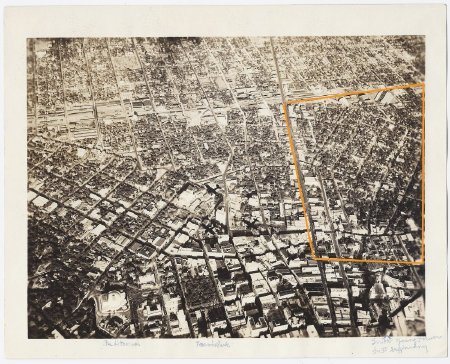Urban Renewal: Coming to Your City
History:
Following World War II, cities across the U.S. experienced a mass exodus of residents and businesses to the suburbs. The Federal Housing and Highways Acts, passed in the 1930s thru 1950s, made the open land both affordable and accessible. Those who remained in the inner city, especially the poor, immigrants, and minorities, typically could not afford to move or were denied the opportunity to live elsewhere. The economic impact of this sudden population shift resulted in an overall decline in living conditions and property values in downtowns across the nation.
Beginning in 1949, a variety of public policy shapers - from social reformers to influential property owners and city planners - rallied around "urban renewal" as the miracle cure for the social and economic ills plaguing many urban areas. This strategy sought to redevelop large tracts within the inner city through government intervention.
San Antonio stood poised at the forefront of urban renewal efforts, having applied for federal funds as soon as Congress passed the 1949 Housing Act authorizing such projects. Plummeting property values, coupled with pockets of true slum conditions, had already led city officials to identify multiple areas within the urban core in need of "clearance." However, since Texas legislation prevented cities from acquiring private property through the use of a legal procedure known as eminent domain, urban renewal did not gain a foothold in Texas until nearly a decade later.
San Antonio stood poised at the forefront of urban renewal efforts, having applied for federal funds as soon as Congress passed the 1949 Housing Act authorizing such projects. Plummeting property values, coupled with pockets of true slum conditions, had already led city officials to identify multiple areas within the urban core in need of "clearance." However, since Texas legislation prevented cities from acquiring private property through the use of a legal procedure known as eminent domain, urban renewal did not gain a foothold in Texas until nearly a decade later.
About this Image:
1) Aerial photo of downtown, looking east.The orange frame outlines the area chosen for urban renewal, with Commerce Street shown as the thick vertical line running through the frame. To the south (right) of Commerce Street, lies the largely residential area that became the site of HemisFair '68.
Credit:
Courtesy of San Antonio Conservation Society Foundation
To Learn More:

